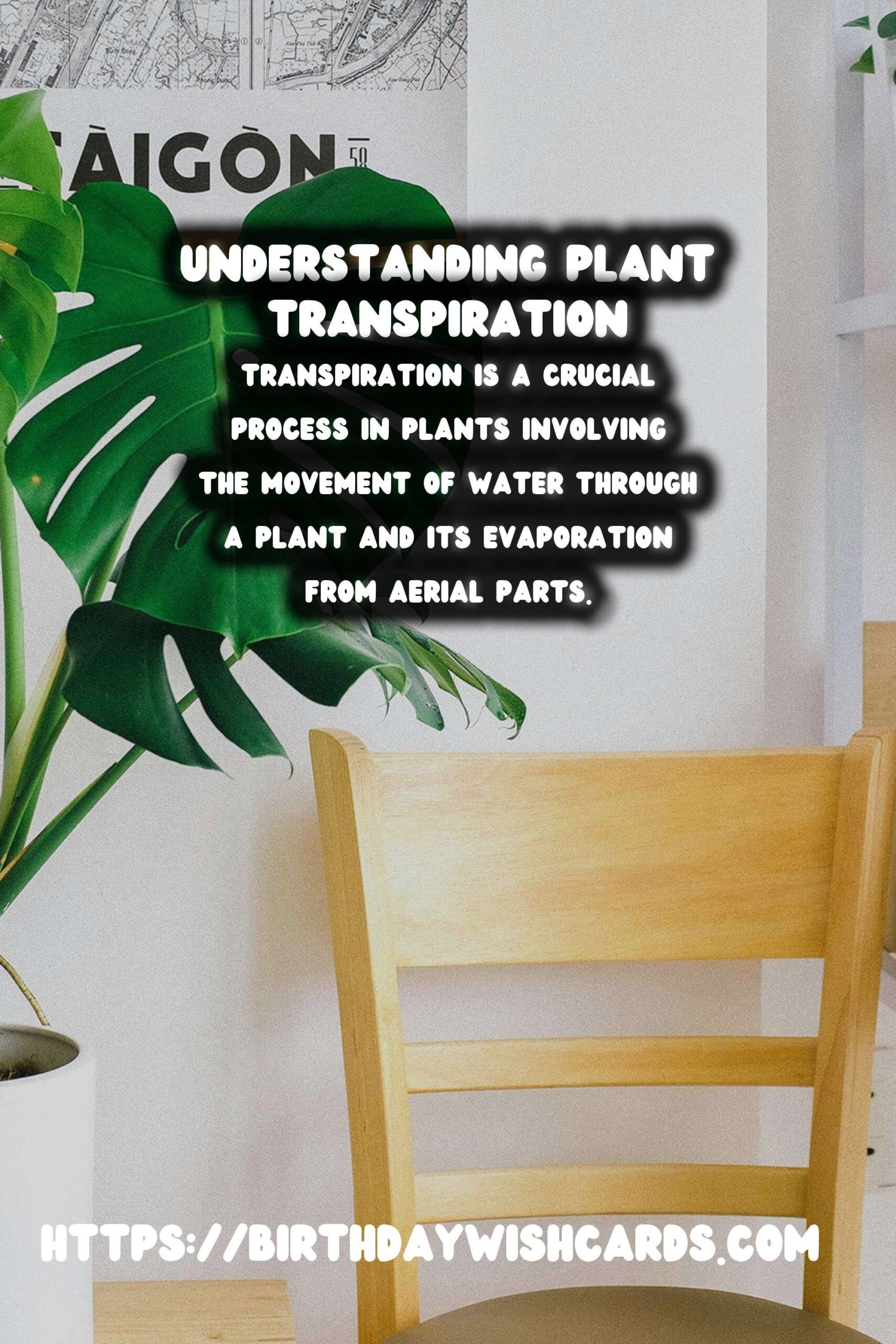
Transpiration is a crucial process in plants that involves the movement of water through a plant and its evaporation from aerial parts, such as leaves, stems, and flowers. It is an essential part of the water cycle and plays a significant role in the life of a plant.
What is Plant Transpiration?
Plant transpiration is the process by which moisture is carried through plants from roots to small pores on the underside of leaves, where it changes to vapor and is released into the atmosphere. Essentially, it is the plant equivalent of sweating and is vital for its survival and growth.
How Does Transpiration Work?
The process begins when water is absorbed by the plant roots from the soil. This water travels through the plant’s vascular system, moving up through the xylem vessels. As the water reaches the leaves, it eventually evaporates from the stomata, which are tiny openings on the leaf surface. This process is driven by the evaporation of water, which pulls more water up from the roots, creating a continuous stream of movement.
The Role of Stomata in Transpiration
Stomata are crucial in regulating transpiration. These small openings can open and close to control the amount of water vapor that is released into the atmosphere. When the stomata are open, transpiration rates increase, and when they are closed, the rate decreases, helping the plant conserve water during dry conditions.
Factors Affecting Transpiration Rate
Several environmental factors can influence the rate of transpiration, including:
- Temperature: Higher temperatures increase evaporation rates, leading to higher transpiration rates.
- Humidity: Lower humidity levels enhance water vapor loss, thus increasing transpiration.
- Wind: Wind can remove the boundary layer of saturated air around the leaf, enhancing transpiration.
- Light: Light stimulates the opening of stomata, increasing transpiration.
Importance of Transpiration
Transpiration is vital for several reasons:
- Water Movement: It helps in the transport of minerals and nutrients from the soil throughout the plant.
- Cooling Effect: As water evaporates, it cools the plant, similar to how sweating cools the human body.
- Maintaining Turgor Pressure: It ensures cells remain turgid, which is essential for maintaining the plant’s structural integrity.
Conclusion
Understanding the process of plant transpiration is vital for botanists, agriculturalists, and anyone interested in plant biology. It not only helps in appreciating how plants survive and adapt to their environment but also has practical implications for agriculture and horticulture, where water management is crucial. By controlling and optimizing transpiration, farmers can enhance crop yields and conserve water resources.
Transpiration is a crucial process in plants involving the movement of water through a plant and its evaporation from aerial parts. The process of transpiration begins when water is absorbed by plant roots and travels up through the xylem vessels. Stomata are crucial in regulating transpiration by controlling the amount of water vapor released into the atmosphere. Several environmental factors, including temperature, humidity, wind, and light, can influence the rate of transpiration. Transpiration is vital for water movement, cooling, and maintaining turgor pressure in plants.
#PlantTranspiration #WaterCycle #Botany #PlantBiology #Gardening

